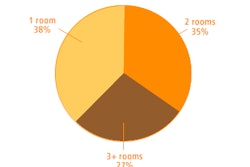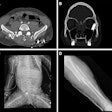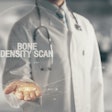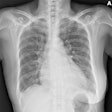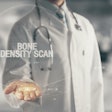Coronary CT angiography (CTA) may be able to predict which plaques are most likely to rupture and cause acute coronary syndrome, according to a new study by Japanese researchers published in the June 30 issue of the Journal of the American College of Cardiology.
The researchers believe their findings could add support to arguments in favor of CTA screening of high-risk but asymptomatic patients. Although no clinical guidelines currently recommend such studies, the authors believe their paper could support the stratification of some patients into a very-high-risk group that might benefit from CTA screening.
In the study, a research team led by Dr. Sadako Motoyama, Ph.D., from Fujita Health University in Toyoake wanted to see if CTA-based analysis of plaque stability could be used to determine which patients were most likely to experience acute coronary syndrome (ACS) due to plaque rupture over the next two years. Previous studies on CTA plaque characterization focused on plaque stability after acute events had occurred, according to the group.
The researchers examined a population of 1,160 consecutive subjects with suspected or known heart disease, and classified 10,037 coronary artery segments with a diameter of ≥ 2 mm. They focused on two types of plaque characteristics shown in previous research to be possible markers of plaque instability: low-attenuation plaque (LAP) and positive vessel remodeling (PR).
The researchers noted that LAP represented plaque with a necrotic core, while LAP represented plaque volume, both of which have been shown to be signs of unstable plaque. Plaque rupture occurs in up to 75% of patients presenting with ACS.
Of the population, 249 patients were examined with a 64-detector-row CT scanner (Aquilion 64, Toshiba Medical Systems, Otawara, Japan) with a collimation of 64 x 0.5 mm, tube current of 400 or 450 mA, and voltage of 135 kV, while 911 patients were examined with a 16-detector-row Aquilion 16 system (Toshiba) with collimation of 16 x 0.5 mm, tube current of 360 mA, and voltage of 135 kV.
Motoyama and colleagues found that of the 45 patients who were positive for both features of plaque instability, LAP and PR, 10 had acute coronary events in the next two years, representing a 22% risk. In patients who had no signs of LAP or PR, less than 0.5% had acute events.
"It seems logical to propose that two-feature positive lesions can be considered potentially vulnerable, and two-feature negative plaques potentially stable," they concluded.
Related Reading
Absence of coronary calcium predicts excellent 10-year survival: study, June 18, 2009
Coronary CTA allows early triage of patients with acute chest pain, May 11, 2009
Coronary CTA helps identify chest pain patients at low risk, April 24, 2009
Coronary CTA identifies ACS patients ready for ED discharge, December 9, 2008
Coronary CT effective for triage of patients with acute chest pain, November 11, 2008
Copyright © 2009 AuntMinnie.com





